When embarking on building projects, it's essential to differentiate between industrial and commercial construction, as each serves unique purposes and bears distinct complexities. While at a glance, both may seem similar as they involve constructing large structures, their functions and requirements vary significantly.
Industrial construction focuses on facilities tasked with manufacturing and production. These projects often demand highly specialized infrastructures tailored for heavy machinery and processes. Meanwhile, commercial construction revolves around spaces where business occurs—be it retail stores, office buildings, or entertainment venues.
Understanding the intricacies between these two types of construction can guide developers and stakeholders in making informed decisions, ensuring projects meet targeted needs efficiently and economically.
- Defining Industrial Construction
- Understanding Commercial Construction
- Comparative Analysis: Industrial vs. Commercial
- Challenges in Each Sector
- Cost Considerations
- Future Trends in Construction
Defining Industrial Construction
Industrial construction serves as the backbone of manufacturing and engineering sectors, facilitating the growth of industries that propel economic development. This type of construction centers around creating facilities designed for heavy-duty processes, such as factories, power plants, refineries, and warehouses. These structures are not just large spaces; they require specific design considerations to accommodate complex equipment, massive machinery, and potentially hazardous materials. The primary objective here is functionality, ensuring that these environments are optimized for efficiency and safety. Architects and engineers collaborate closely to create plans that can withstand extensive wear and tear, considering factors like vibration from manufacturing equipment and robust electrical systems.
Given the nature of the tasks performed within these facilities, the standards for safety and environmental regulations are notably stringent. Projects often require compliance with multiple agencies, including occupational safety, health administrations, and environmental protection bodies. These regulations ensure that the structures not only serve their purpose but also protect those who work within them and the surrounding environment. Materials used in industrial construction are selectively chosen for resilience against specific stresses anticipated in that environment, such as temperature variations and chemical exposure.
The complexity of industrial projects means that timelines and budget constraints often dominate planning discussions. Unlike residential or general commercial projects, industrial construction requires meticulous scheduling to align with the operational needs of the industry it serves. Contractors may encounter unique challenges, such as integrating new technologies into existing systems or coordinating with international suppliers. A project delay can have significant ripple effects, impacting production schedules and financial forecasts for the business involved.
"The efficiency and reliability of industrial construction projects are fundamental to industrial growth," explains John Thompson, a veteran engineer in industrial project management. "Without carefully designed and executed facilities, production can suffer, leading directly to financial losses and operational bottlenecks."
Moreover, one of the driving forces behind innovations in industrial construction is sustainability. There is an increasing demand for energy-efficient designs and sustainable practices. Incorporating green technology, such as solar panels or advanced recycling systems, is becoming commonplace as industries strive to minimize their carbon footprint. This shift not only helps reduce environmental impact but also often results in long-term cost savings for the companies involved.
In essence, industrial construction is a field characterized by its unique challenges and opportunities. It plays a critical role in shaping how industries build their future. From the initial design phase to the completion of construction, each stage demands careful consideration and expertise to ensure that the final product is not just a building, but a robust and efficient facilitator of industrial advancement.
Understanding Commercial Construction
Commercial construction is a booming industry that shapes the environments in which we conduct business and interact socially. It encompasses a wide range of building projects, including the development of retail outlets, office spaces, medical centers, and hospitality venues. These projects demand a distinct approach compared to industrial construction, as they focus primarily on the client and user needs while ensuring aesthetics and functionality are balanced. Developers delve into market analysis to grasp the specific requirements of the area and clientele, aligning their plans with local zoning laws, market demands, and sustainability trends.
One of the defining characteristics of commercial construction is its emphasis on user experience and accessibility. Buildings are designed with attention to detail, ensuring compliance with ADA regulations, optimizing flow of movement, and incorporating eco-friendly practices. Advances in technology allow for smart building solutions that enhance the efficiency and environmental friendliness of structures. Use of renewable energy sources, intelligent climate control systems, and recycled materials are some of the ways constructors innovate to create modern commercial spaces that are energy-efficient and in line with current green standards.
Commercial construction projects are also unique for their financial implications. These developments are often driven by economic forecasts and are heavily influenced by financial stakeholders seeking returns on investment. According to a report by the World Green Building Council, energy-efficient buildings not only contribute towards sustainability but also lead to potential long-term cost savings, making them an attractive option for investors. This financial dynamic adds a layer of complexity, requiring precise planning, budgeting, and management efforts.
Emerging Trends in Commercial Construction
There has been a significant shift towards incorporating technology in commercial construction, with smart buildings becoming the heart of modern architecture. Such structures not only adapt to technological integrations with ease, but they also embrace flexibility and adaptive reuse. An example of this is how existing historical buildings are being repurposed into modern commercial hubs, blending heritage with cutting-edge facilities. A quote from the American Institute of Architects points out,
"Innovative repurposing of existing structures plays a crucial role in sustainable development and offers immense value to communities."
The adoption of Building Information Modeling (BIM) has revolutionized the commercial construction sector by enabling detailed 3D modeling and allowing for enhanced collaboration between stakeholders. This tool significantly reduces project duration and errors, making it a staple in commercial construction methods. The focus on community-centric spaces has also risen, with designers prioritizing communal areas, outdoor landscapes, and features that promote social interaction and well-being. By understanding these shifts, constructors and developers can remain competitive and innovative in an ever-evolving market landscape.
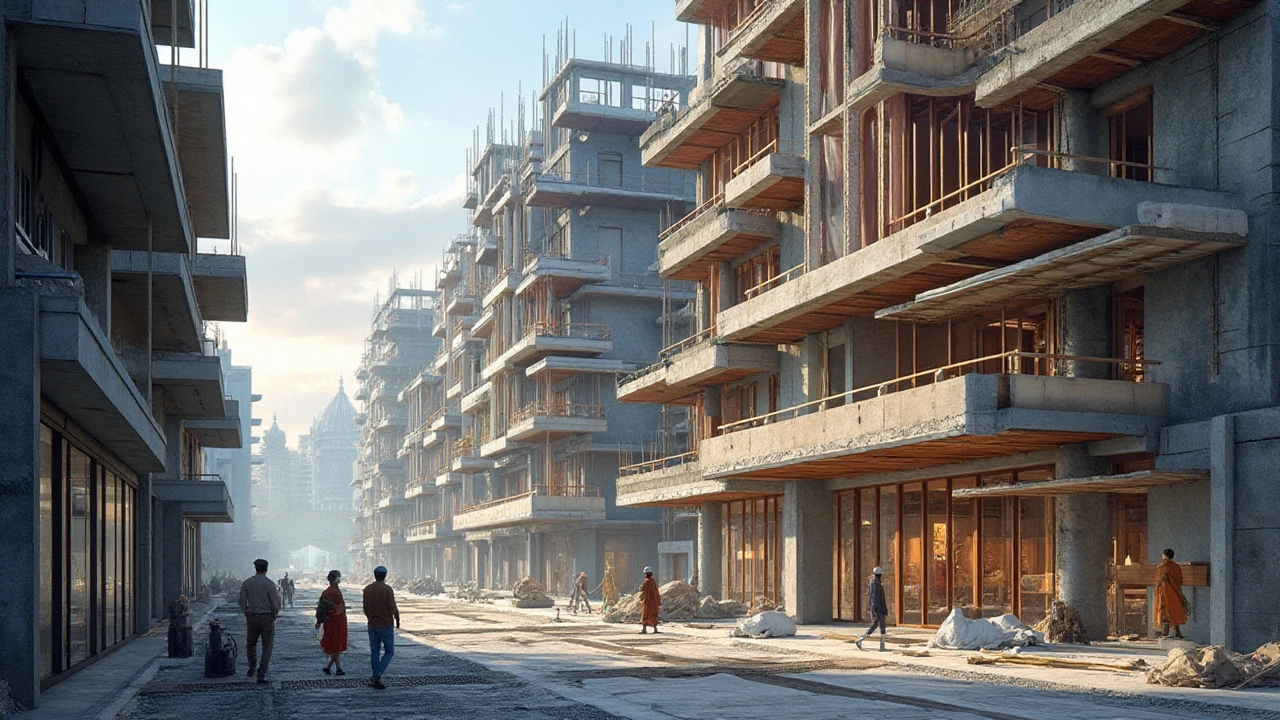
Comparative Analysis: Industrial vs. Commercial
When analyzing the differences between industrial construction and commercial construction, it's crucial to understand their core objectives. Industrial construction focuses on creating facilities for manufacturing, storing goods, and distributing products. These structures often include factories, power plants, and refineries, requiring durable materials and precise engineering. In contrast, commercial construction targets consumer-oriented buildings like shopping malls, hospitals, and office buildings, prioritizing accessibility, aesthetic appeal, and customer experience.
The technological needs for these two construction types also differ significantly. Industrial projects often demand advanced mechanical systems like ventilation, material handling systems, and heavy machinery installations. These require expertise in engineering and special attention to safety regulations and industry standards. Commercial buildings might prioritize advanced HVAC systems, aesthetically pleasing interior designs, or digital infrastructure to support businesses. Both types of construction rely heavily on project management skills but cater to different professional audiences, requiring tailored project execution strategies.
A significant contrast lies in the regulatory demands and compliance measures needed. Industrial developments are subject to stringent regulations concerning environmental impact, worker safety, and operational emissions due to the nature of activities performed. Compliance can be more costly but vital for operation. Conversely, commercial projects address zoning laws, customer safety, and accessibility mandates like ADA compliance, ensuring each building meets community standards and user accessibility.
A quote by renowned architect Frank Gehry succinctly sums up this dichotomy:
"Architecture should speak of its time and place, but yearn for timelessness." This reflects how industrial architecture must fulfill immediate expected functionalities, while commercial architecture often strives for enduring consumer connection and relevance.Additionally, cost estimation and budgeting processes differ, with industrial projects often facing higher initial capital expenditure due to specialized equipment and materials. However, commercial constructions may require ongoing investments concerning renovations, rebranding, or expansions to adapt to market trends.
The workforce involved in each type also highlights different skill sets. Industrial construction teams typically include engineers, specialized contractors, and safety inspectors. These professionals are tasked with understanding and implementing complex systems and ensuring safe operational conditions. Commercial construction creeds might feature architects, interior designers, and retail consultants focusing on delivering functional yet appealing spaces. Both domains increasingly embrace technology, utilizing software for design, resource management, and project forecasting.
As we peer into future trends, both sectors evolve in response to economic, technological, and environmental inputs. The rise of sustainable, green technology affects both, albeit distinctly. In industrial settings, reducing carbon footprints and energy consumption stands out, whereas commercial spaces are more influenced by consumer demand for eco-friendly environments. Industry forecasts suggest a balanced growth trajectory with nuanced priorities.
In examining these core distinctions, it's evident that while industrial and commercial construction may share foundational skills and basic principles, their objectives, executions, and impacts bring each into its unique focus. As markets and technologies shift, the agility and adaptability of each sector determine its continued success and contribution to our ever-evolving built environment.
Challenges in Each Sector
In the world of construction, both commercial construction and industrial construction face distinct challenges due to their differing nature and requirements. Commercial construction often revolves around creating spaces that attract customers and enhance user experience. When erecting a new shopping center, for example, developers must juggle aesthetics with accessibility, ensuring that spaces are visually appealing while also complying with stringent regulations related to public safety and urban planning. This balancing act requires meticulous planning and innovative design solutions that do not compromise on safety standards or functionality.
Architects and builders in commercial projects must also keep pace with rapidly changing design trends and consumer preferences. This might mean integrating eco-friendly technologies or offering flexible spaces that can adapt to various uses as business needs evolve. Given that commercial spaces are typically client-focused, there’s often a need to quickly respond to market demands, which can include a high turnover of design elements and retail concepts. Such dynamics require a versatile approach to both design and construction methodologies.
In contrast, industrial construction is characterized by its focus on durability and functionality over aesthetics. One of the primary challenges in this sector is meeting the specific technological and engineering demands of facilities such as factories, plants, or refineries. These buildings must house massive equipment, often requiring reinforced structures capable of supporting heavy loads, resisting vibrations, and withstanding extreme operating conditions. Safety standards are particularly stringent, given the hazardous nature of many industrial environments, and non-compliance can result in severe legal and financial ramifications.
Strategic coordination among various engineering specialties is crucial in industrial projects. Mechanical, electrical, and civil engineers must collaborate seamlessly to ensure that all systems function harmoniously. This often involves integrating complex HVAC systems, advanced electrical setups, and robust plumbing infrastructures. Nigel Allen, a noted construction manager, once said,
“The intricacies of industrial construction lie in its precision and resilience; the space must work as a gear within the larger machine that is production.”This underscores the importance of precision in planning and execution, without which projects risk delays or budget overruns.
Moreover, both sectors are increasingly under pressure to adopt sustainable construction practices. While commercial projects might focus on energy efficiency or green certifications, industrial developments face the challenge of reducing carbon footprints amid manufacturing processes. This requires innovative strategies such as onsite waste management systems or the use of sustainable materials.
In conclusion, challenges in commercial construction often lie in the need for adaptability and customer orientation, while industrial construction focuses on robustness and compliance with specialized working conditions. Each faces its own hurdles, but the key to overcoming them lies in understanding the nuances unique to each and harnessing technology and skilled craftsmanship to bridge the gaps.
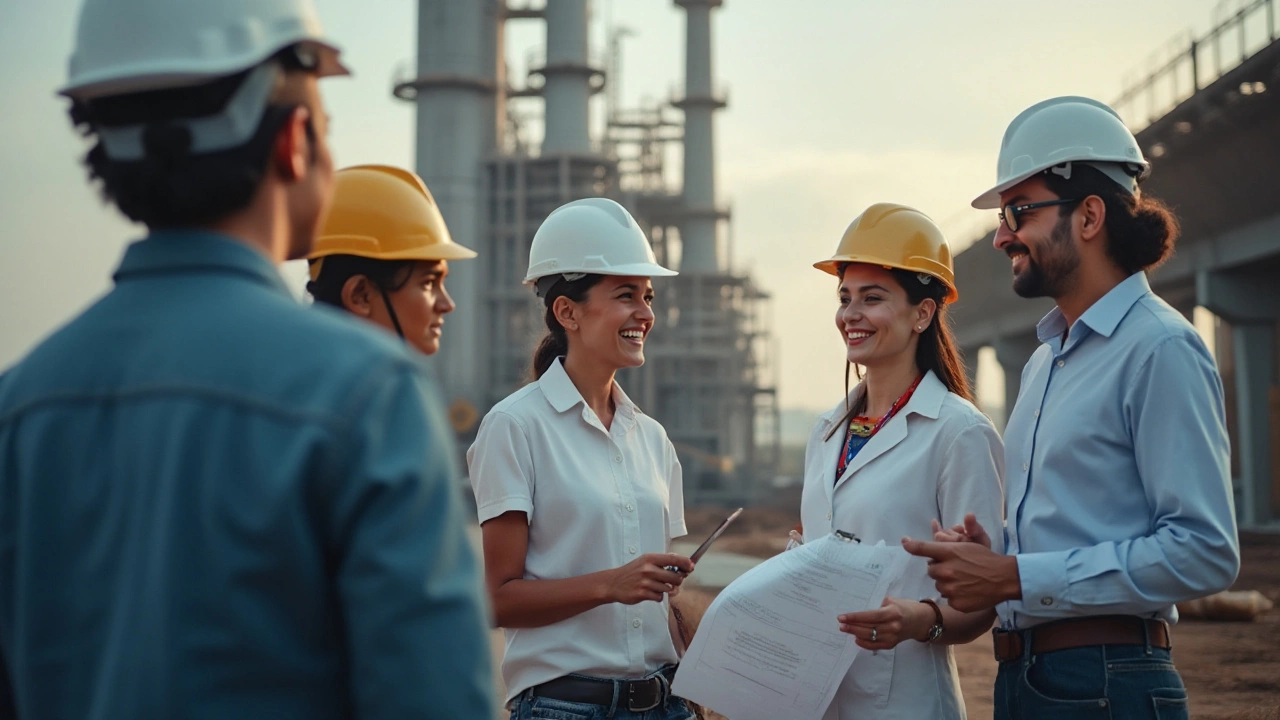
Cost Considerations
Cost considerations in both industrial construction and commercial construction play a pivotal role in the decision-making process. While both sectors require substantial financial investment, the factors influencing these costs can differ substantially. For those planning industrial projects, the emphasis often lies on the cost of materials and equipment, as these structures demand robust and durable components to withstand rigorous industrial activities. On the other hand, commercial buildings might prioritize design elements, aesthetics, and customer experience, which can dictate a different financial focus.
In industrial construction, the nature of the facility drives up costs. Facilities must comply with stringent safety and environmental regulations, necessitating advanced safety technologies and materials that can endure extreme conditions. The size and complexity of these projects often mean higher labor costs since they require specialists with niche skills. Conversely, commercial construction might allocate significant budgets to location and accessibility, ensuring the property appeals to foot traffic and suits branding needs. Real estate prices, especially in urban centers, can significantly impact project budgets.
The project timeline is another crucial factor, as delays can escalate costs in both types of construction. However, industrial delays might incur additional penalties due to disruption of supply chains or plant operations. In commercial projects, delays can affect rental income projections and operational timelines. Keeping projects within budget demands meticulous planning, comprehensive risk management, and often, experienced advisors who can navigate the industry’s fluctuating technologies and market trends.
"Understanding these cost dynamics is paramount for any stakeholder," states John Smith, a renowned construction economist. "Without a precise grasp on cost implications, projects risk overshooting budgets and, as a result, compromising on quality or scope."
With the adoption of innovative technologies like Building Information Modeling (BIM), both industrial and commercial sectors are embracing strategies that enhance cost-efficiency. BIM allows for better visualization, precise budgeting, and reduced waste, proving essential in maintaining a competitive edge in today's market. It’s worth noting that while initial investments in technology might be high, the returns through efficiency and accuracy can often outweigh the costs.
The labor market also imposes significant cost implications. In recent years, a shortage of skilled labor has driven up wages, affecting everything from project feasibility to completion timelines. Companies are now investing in training and development to cultivate the necessary skills internally, which poses a cost yet alleviates future labor shortages. Developers must weigh these options carefully, considering both immediate and long-term financial impacts.
Consequently, controlling costs in both industrial and commercial construction not only requires an understanding of market forces but also the ability to foresee and adapt to future trends, ensuring that projects remain financially viable and strategically sound.
Future Trends in Construction
The construction industry is undergoing transformative changes, propelled by technological advancements, sustainability demands, and evolving client expectations. One of the most exciting trends is the integration of Building Information Modeling (BIM) throughout the project lifecycle. BIM provides a comprehensive digital representation of a building, facilitating improved collaboration among architects, engineers, and contractors and enhancing efficiency in both commercial construction and industrial construction. With accurate and accessible data, stakeholders can predict project outcomes more reliably and make data-driven decisions to mitigate risks.
Another significant trend is the growing emphasis on sustainable construction practices. This trend sees an increase in the use of eco-friendly materials and the adoption of energy-efficient building designs that reduce environmental impact. Regulations are tightening worldwide, encouraging developers to pursue certifications, such as LEED, to ensure their buildings meet modern environmental standards. Simultaneously, demand for zero-waste construction techniques rises, wherein every material is utilized to its fullest potential, minimizing excess and promoting recycling and reuse.
The construction sector is also embracing automation and robotics to revolutionize traditional building methods, especially within the realm of industrial construction. Robotics can handle repetitive or high-risk tasks with precision, freeing human workers to focus on intricate operations that require human dexterity and experience. Technologies like 3D printing have emerged, allowing for rapid construction of complex structures with minimal waste. This technology is not only faster but also reduces labor costs and introduces new possibilities in architectural design.
A notable shift is the focus on smart buildings and the Internet of Things (IoT), which are becoming central to modern commercial construction. Smart buildings incorporate automated systems that enhance operational efficiency, comfort, and energy conservation. With IoT devices, buildings can monitor their performance, adjust environmental conditions automatically, and significantly reduce operational expenses over time. As cities grow increasingly connected, these smart technologies are critical in ensuring new constructions are future-ready.
According to a report by McKinsey & Company, “The global need for construction is on the rise, particularly in fast-growing urban areas, compelling industries to innovate continuously to meet demands efficiently and sustainably.” Additionally, modular construction is gaining momentum as a trend. By constructing building sections offsite in controlled factory environments, modular construction offers improved quality control and faster project timelines, benefiting both urban and remote site developments.
Statistical Insights
To grasp this landscape more vividly, consider the adoption rates of these technologies worldwide. According to a study conducted in 2023:| Technology | Adoption Rate |
|---|---|
| BIM | 60% |
| Smart Building Systems | 45% |
| 3D Printing | 18% |
| Modular Construction | 30% |
These trends underscore a dynamic shift towards embracing innovation in construction, aiming to enhance performance, sustainability, and cost-effectiveness. As these technologies evolve, they hold the promise of reshaping the construction landscape profoundly, paving the way for more resilient, efficient, and intelligent infrastructure in the years to come. Investors and builders who stay ahead by adopting these cutting-edge innovations will likely lead the next wave of growth in this vital industry.
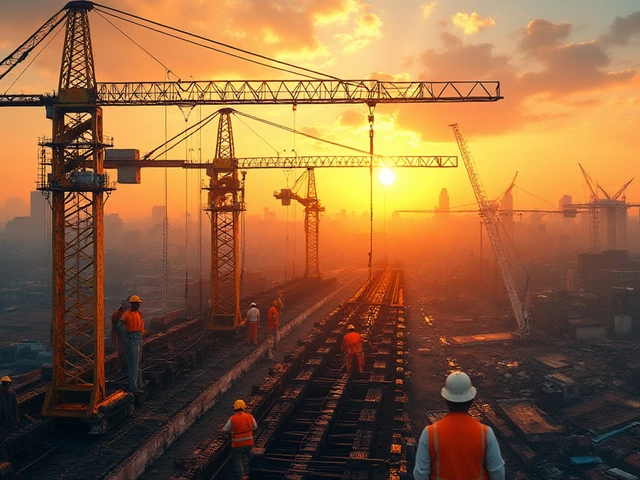
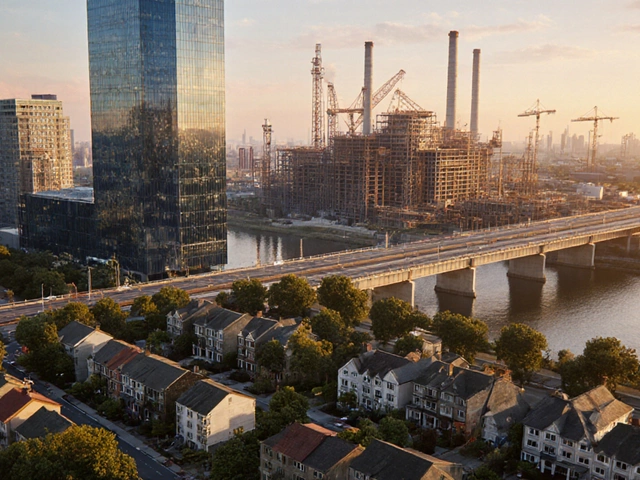
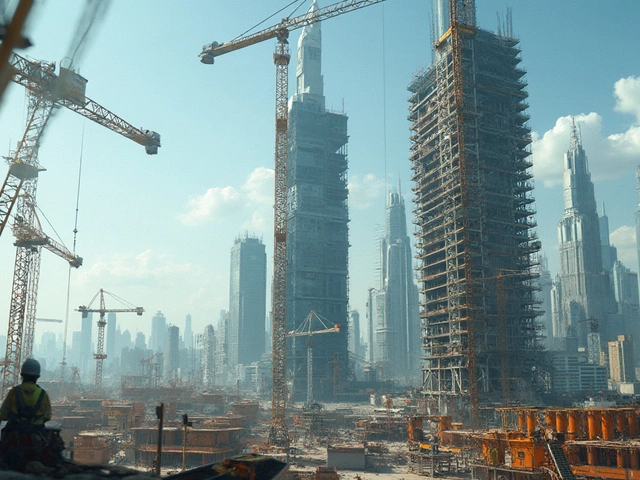
Write a comment